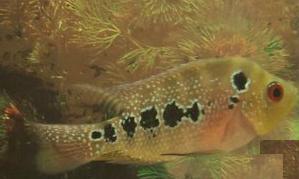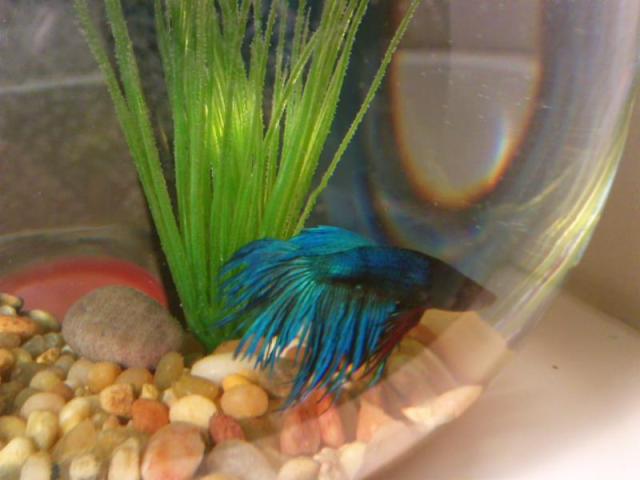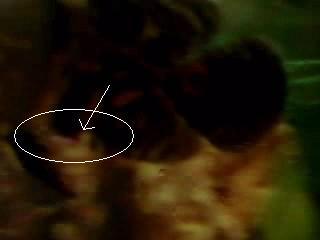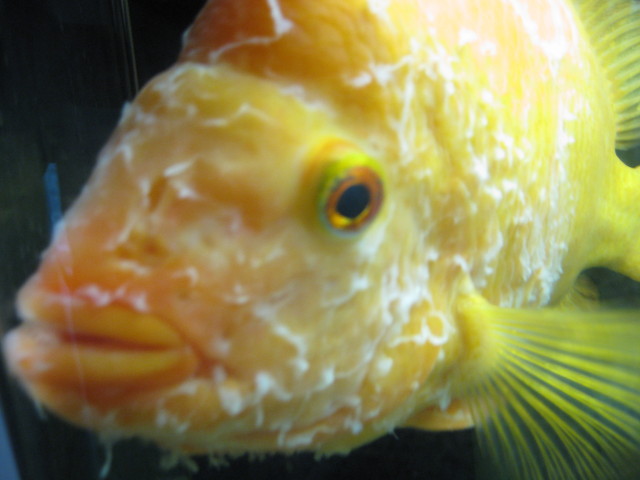QuestionWhat's wrong with my Gourami?
Oh boy I'm putting a lot of hope in you!!!
I recently (about two month ago) set up a 10 gal. tropical tank. I've had a 30 gal. tank with small kois for over two years.
I started the new 10 gal with cycled water from that tank. I bought 1 gourami, two rosy barbs and 1 chiniese algae eater-all very small.
i did some more reseach on the gouramis and rosybarbs and added one more gourami and two more rosybarbs. after about 1 week the newest gourami (all bought at Petsmart) got sick..always hiding and not eating. Towards the end I noticed "white snot" coming out of his nose, like a slimy white thread) I removed him from the tank to a same water, temp,... bucket with an airstone, some melafix and coppersafe..I found him dead the next morning..he looked pale but otherwise ok except for the snot.
A month later my first gourami started to have problems eating..he'd take it in and then spit it out.. I did research online to find that it could be because of stress..so I gave away the busy rosybarbs, so now it's just him and the algea eater. I added salt, coppersafe and most recently internal and external parasite remedy "tank buddies".
This morning I noticed that white snot coming out of his nose...he always seemed to try to spit something out.He also looks a bit scruffy.
Can you tell me what he has? nobody else seems to know...
ps: the ph is at about 6.4 (nothing I can do about it...I use Amquell and novaqua to detoxify the water and use a whisper power filter, temp. is at 74F
Thanks for your help!!!
jenny
AnswerHi Jenny;
Poor little guys. This sounds like the effects of "New Tank Syndrome". It burns their gills, skin and eyes. The water itself from the other tank isn't going to help the new one cycle. The bacteria that balances the tank grows on surfaces like in the filter and on the gravel. Very little of it floats around in the water. You can take some gravel from the established tank and put it in a length of nylon stocking to help for now until it cycles. (2 to 4 cups of it is good). Lay it on the gravel and bury it a bit to "seed" the new tank with mature beneficial bacteria. (If the gravel is the same color as the old tank, just pour it right in to the new tank).
You need to make some water changes to lower the toxin levels. Remove 25% of it and take a water sample to the local fish store to measure the ammonia, nitrite and nitrate. If any of them are elevated make daily water changes of 25% until it is safe for the fish. These partial changes help avoid stress. Big changes can do more harm than good, further stressing the already traumatized fish.
The pH is okay for now, but it is low enough that you need to watch it carefully. There are buffers and pH adjusters you can add to help it stay closer to 7.0. Check with your local fish store. Aquarium Pharmaceuticals makes some good ones. Get the one that says "pH 7.0". It will keep it right at or very close to what your fish need. The water needs more minerals and this is what these products add to the water. Follow the instructions on the label.
Here is my article on new tanks to help you understand the whole crazy process more;
**********
New Tank Syndrome or Break-in Period
So you have a new tank and you filled it up, put the filter together, mounted the heater into place and turned on the lights. You have all the plants and decorations where you want them....
You are ready for fish.
But, your filter is not ready for a full tank of fish yet.
The filter is running and moving the water and cleaning out crud, right? Of course!
But a very important part of your filter is the part you can't see. An aquarium filter removes the larger visible stuff, but it also must remove the dissolved fish waste that turns into ammonia in the water. To do this, special bacteria must grow in the filter system and on the particles of gravel in the bottom of your tank. This process occurs even on a limited scale in little fish bowls that have no filter in them.
This is "New-Tank Syndrome" or the "Break-in Period". The entire process takes 6 to 8 weeks to complete because these "nitrifying" bacteria grow quite slowly.
Start off with only two hardy fish for every ten gallons of water and don't add more until the 6 to 8 weeks has gone by. Hard to be patient, but it is worth it to keep your fish alive and healthy. As a matter of fact, the bacteria cannot develop without fish in the tank. You can let that tank sit forever without fish in it, but as soon as the first fish goes in the process begins. Avoid changing the filter pads during break-in. This removes the bacterial colonies that are essential to a balanced aquarium. You can rinse the filter pad out in a container of aquarium water. This will preserve most of the bacteria colonies while still allowing your filter to flow freely. Even using bacteria additives and water conditioners when you first set up the tank will not make a tank cycle by itself. If there are no fish to provide food (fish waste) for the bacteria, the beneficial bacteria cultures will die and you will have to start the colonies all over again once fish are added to the tank.
Feed your new fish VERY lightly. Any excess food will cause additional waste your system cannot afford to have right now. If you see food floating around or lying on the plants and gravel after five minutes, too much food is going into the tank. Cut back a little each time you feed until it is ALL gone 5 minutes after you feed them.
During this "break-in period" your tank will become cloudy and milky looking. You may have to tolerate this for the entire break-in period but it is only temporary. Changing 25% of the water three times a week until the break-in period is over helps a great deal. Changing water reduces the ammonia and nitrites that rise while the bacteria continues to multiply. If ammonia and/or nitrites become too high, your fish will become stressed and possibly die. Use a good water conditioner when you replace the water and make sure it is the right temperature to avoid shocking your fish.
When the break-in period is over, do regular water changes and vacuum the gravel at the same time. A change of 25% every one to two weeks is a good rule of thumb. It simply needs to be done for healthy fish.
Following these guidelines will help you get your new tank on the right track.
**********
Followups welcome.
At Your Service;
Chris Robbins

 flower horn fish
Question
my fh
please identify my flower horns sex male
flower horn fish
Question
my fh
please identify my flower horns sex male
 new betta fish with black dust spots
Question
ferdie
just brought home a new betta an
new betta fish with black dust spots
Question
ferdie
just brought home a new betta an
 swollen butt/ possible worm
Question
fishs butt
I currently have a red tiger oscar.
swollen butt/ possible worm
Question
fishs butt
I currently have a red tiger oscar.
 Sucky Fish with white fuzz
Question
sucky fish with white
I have a 30 gallon tank
Sucky Fish with white fuzz
Question
sucky fish with white
I have a 30 gallon tank
 african cichilid
QuestionIMG_0364.jpg
QUESTION: We have a red dev
african cichilid
QuestionIMG_0364.jpg
QUESTION: We have a red dev